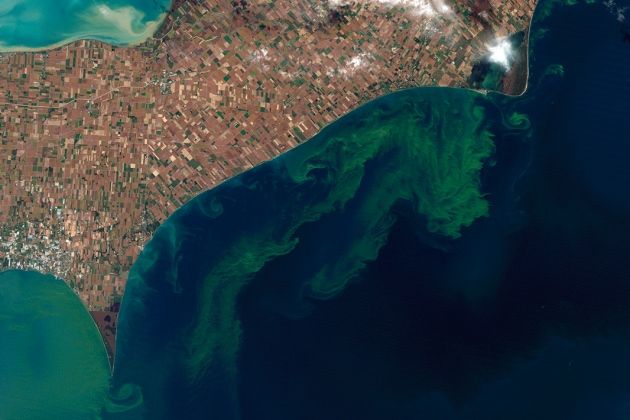Algal Blooms Worsened by Climate Change
Published on by Water Network Research, Official research team of The Water Network in Academic
Rising ocean temperatures drive more intense and longer lasting toxic outbreaks.
Researchers have long suggested that climate change could mean more damage from algal blooms — runaway growths of algae that can strangle marine ecosystems and devastate coastal economies.
Now, a study has unpicked how warming ocean temperatures have already driven an intensification of blooms around North America — the first time this link has been established at an ocean scale.
Harmful algal blooms can occur when changes in water conditions lead to a huge growth in the number of a particular species of algae. The blooms can produce toxins, become so large that they kill marine life, and even turn water a different colour.
Research has established that one factor that helps blooms to spread is a sudden increase in nutrients such as nitrogen and phosphorus — often from agricultural fertilizers — and it has also linked warming temperatures to individual events. But the broader influence of climate change on these outbreaks is less well quantified.

Image: In 2011, North America’s Lake Erie experienced one of its worst algal blooms in decades.
Image source: Nature
Blooms abound
Christopher Gobler, who studies coastal ecosystems at Stony Brook University in Southampton, New York, and his colleagues looked at the relationship between blooms in the North Atlantic and North Pacific oceans and temperature changes in the region to investigate whether the events there were linked to were linked to ocean warming.
Previous research has studied the influence of climate change on algal blooms in individual coastal systems, says Gobler, but this is the first to assess ocean-basin-wide trends.
The researchers looked at two species of algae: Alexandrium fundyense and Dinophysis acuminata . (These species produce toxins that can cause illnesses — sometimes fatal — in humans who eat shellfish contaminated with them). They used detailed data on sea-surface temperatures to model trends in the growth rates of the algae species and the periods when blooms occurred from the early 1980s into the twenty-first century.
At dozens of sites, their model suggests that new blooms could occur where they hadn't happened before. The researchers found higher potential growth rates and longer bloom seasons for both species in many parts of the Atlantic coast and along Alaska. In some places, they found the bloom season to now be more than a month longer than it was in 1982.
The team used its model to retrospectively predict what harmful blooms might have occurred in the time period and found good agreement with actual events.
Gobler points out that that the ocean does not warm uniformly, with some regions warming faster than average and some cooling. This means blooms will appear in new regions, and may actually reduce in some places they currently occur.
Factors other than temperature are still clearly important, he says.
Source: Nature
Media
Taxonomy
- Algae
- Climate Change
- Climate